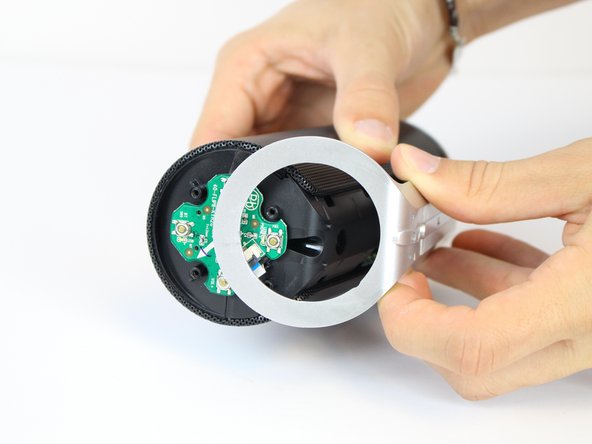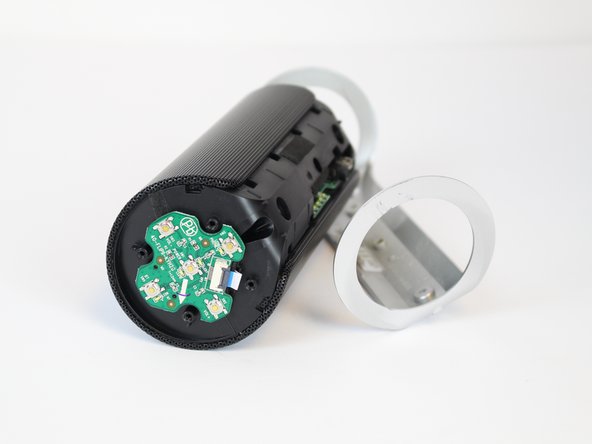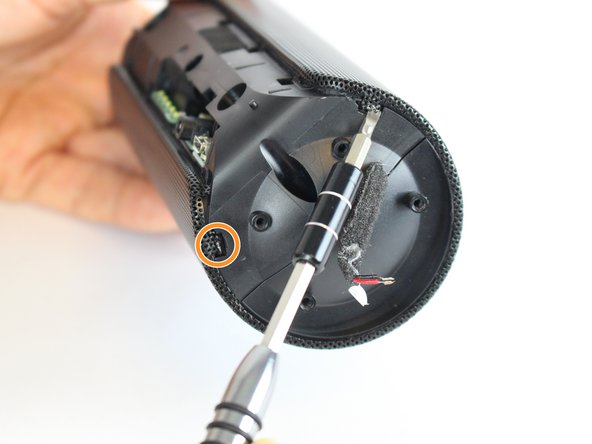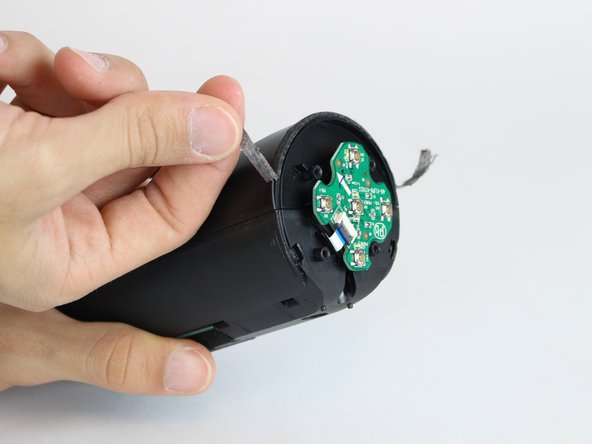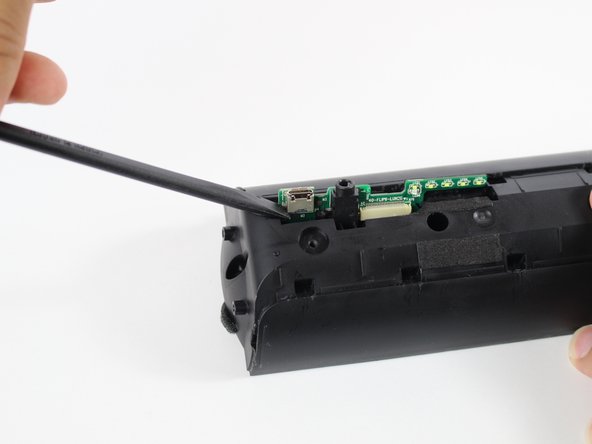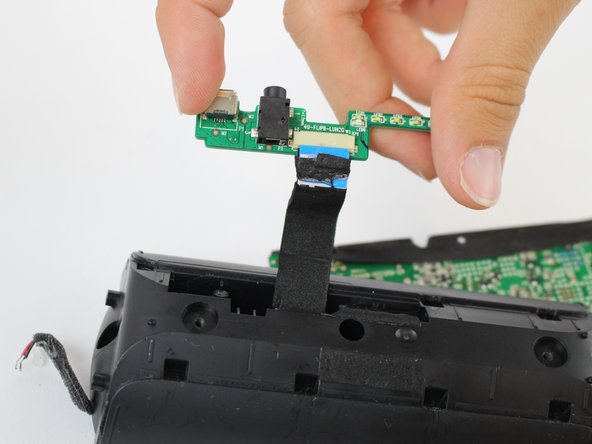Diese Version enthält möglicherweise inkorrekte Änderungen. Wechsle zur letzten geprüften Version.
Was du brauchst
-
Dieser Schritt ist noch nicht übersetzt. Hilf mit, ihn zu übersetzen!
-
Begin by removing the rubber caps on both sides of the JBL Flip 2 by using the black spudger to get in between the creases.
-
-
Dieser Schritt ist noch nicht übersetzt. Hilf mit, ihn zu übersetzen!
-
Remove the eight 7.0 mm Phillips #1 screws on both sides of the JBL Flip 2.
-
-
Dieser Schritt ist noch nicht übersetzt. Hilf mit, ihn zu übersetzen!
-
The NFC chip is glued onto the side of the device. Use the black spudger to separate the mic from the surface.
-
Gently slide the NFC chip into the device through the slot that the wire comes from.
-
-
Dieser Schritt ist noch nicht übersetzt. Hilf mit, ihn zu übersetzen!
-
Peel the black rubber piece from one end to the other.
-
-
Dieser Schritt ist noch nicht übersetzt. Hilf mit, ihn zu übersetzen!
-
Remove the two 7.0 mm Phillips #1 screws.
-
Carefully detach the silver plastic cover by pulling both ends off.
-
Separate the silver plastic piece by pulling it off from the middle.
-
-
Dieser Schritt ist noch nicht übersetzt. Hilf mit, ihn zu übersetzen!
-
Using a flat-head screwdriver or spudger, pry out the 8 metal nibs on the back side of the speaker.
-
Repeat the same process for the 4 remaining metal nibs (two on each end).
-
-
Dieser Schritt ist noch nicht übersetzt. Hilf mit, ihn zu übersetzen!
-
Expand the metal casing and carefully slide it off the speaker.
-
-
-
Dieser Schritt ist noch nicht übersetzt. Hilf mit, ihn zu übersetzen!
-
Using the driver adapter, first insert the #4 socket into the driver; followed by the #1 Philip's head bit in order to reach the three 13.0 mm screws.
-
-
Dieser Schritt ist noch nicht übersetzt. Hilf mit, ihn zu übersetzen!
-
Using the classic spudger, get underneath the black tape strips found on both side of the device.
-
After lifting a portion of the tape off of the device, gently peel the tape off of the device, making sure to keep it intact.
-
There is another piece of tape on the side of the device with the control buttons. Lift the tape with the classic spudger and then peel the rest of the tape off.
-
-
Dieser Schritt ist noch nicht übersetzt. Hilf mit, ihn zu übersetzen!
-
Wedge a spudger between the two halves where the tape was to pry the device open.
-
-
Dieser Schritt ist noch nicht übersetzt. Hilf mit, ihn zu übersetzen!
-
Use the black spudger to disconnect the speaker cord from it's socket.
-
-
Dieser Schritt ist noch nicht übersetzt. Hilf mit, ihn zu übersetzen!
-
Use the black spudger to disconnect the auxiliary wire from its socket.
-
-
Dieser Schritt ist noch nicht übersetzt. Hilf mit, ihn zu übersetzen!
-
Carefully remove the cable connecting the control chip to the motherboard.
-
-
Dieser Schritt ist noch nicht übersetzt. Hilf mit, ihn zu übersetzen!
-
Using the black spudger, carefully remove the cord connecting the battery to the motherboard.
-
-
Dieser Schritt ist noch nicht übersetzt. Hilf mit, ihn zu übersetzen!
-
Carefully remove the cable connecting the nfc chip to the motherboard.
-
-
Dieser Schritt ist noch nicht übersetzt. Hilf mit, ihn zu übersetzen!
-
Remove the one 7.0 mm Phillips #1 screw that connects the I/O board to the casing.
-
-
Dieser Schritt ist noch nicht übersetzt. Hilf mit, ihn zu übersetzen!
-
Remove the cord that connects the I/O board to the motherboard.
-
Put the motherboard to the side.
-
-
Dieser Schritt ist noch nicht übersetzt. Hilf mit, ihn zu übersetzen!
-
With the black spudger, carefully wedge out the I/O board.
-
-
Dieser Schritt ist noch nicht übersetzt. Hilf mit, ihn zu übersetzen!
-
Gently pull the I/O board out from the speaker.
-
-
Dieser Schritt ist noch nicht übersetzt. Hilf mit, ihn zu übersetzen!
-
Desolder the auxiliary port to remove it from the I/O board..
-
Rückgängig: Ich habe diese Anleitung nicht absolviert.
Ein:e weitere:r Nutzer:in hat diese Anleitung absolviert.
2 Kommentare
Is It hard to repair ? I have one that is not charging, I don't know if is the battery or the usb port.
Where can I purchase the auxiliary port (preferably in Europe)?










